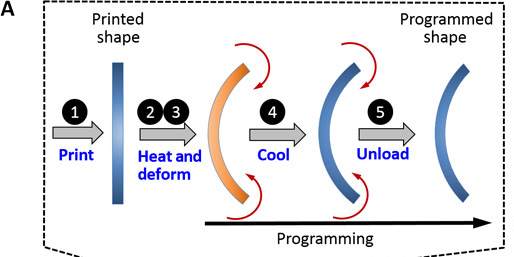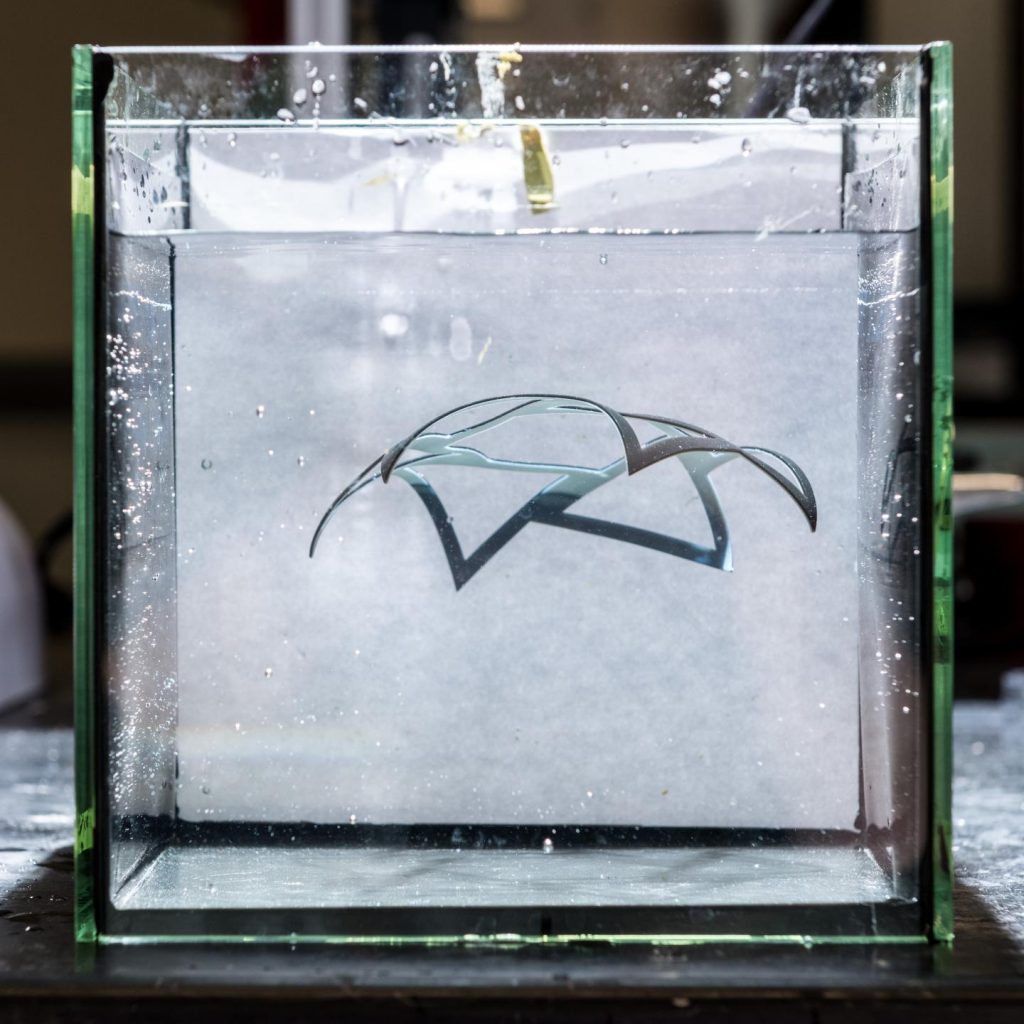A study published in Science Advances demonstrates a way of creating 3D printed shapes that assemble when exposed to heat. The study proposes a simplified process of “4D printing” with the potential for applications in high-value manufacturing and consumer products, such as expanding heart stents, and flat-pack furniture that assembles itself.
One expanding 4D material demonstrated in the study. Clip via New Scientist on YouTube.
How does it work?
The method uses a composite material that is part elastic and part shape memory polymer (SMP) – a smart material already in use within manufacturing for its ability to change shape. By combing the two materials, this research facilitates structures that are both malleable and stiff, with quick reaction when exposed to heat. 3D printing facilitates more flexible design possibilities, such as interconnecting lattice shapes renowned for their high strength to weight ratio.
SMPs have a compressive strain determined by molecular makeup. When heat is applied, this strain is released, allowing the object to expand into a new permanent shape.

Proliferation of 4D printing
The term 4D printing was first coined in a TED talk on the topic by research scientist Skylar Tibbits. At MIT Tibbits is director and founder of specialized Self-Assembly Lab that focuses on nano to architectural scale projects utilizing the 4D concept.
Returning to the 4D printing study in Science Advances it’s easy to see how the concept has become such a hot topic for construction and fabrication. For comparison, 3D printing a shape such as the dome depicted in the tank below would take about 8 times as long, and use up to 8 times the amount of material in supports.

3D printing smart materials
Authors of the study are attributed variously to the Singapore University of Technology and Design, Georgia Institute of Technology, Xi’an Jiaotong University, and Zhejiang University.
As previously reported on 3D Printing Industry other research from the Singapore University of Technology and Design includes a study on the “most stretchable” 3D printable material, and Georgia Institute of Technology has been investigating a composite salt material for porous 3D printed structures.
Direct 4D printing via active composite materials is published online in Science Advances journal 12 Apr 2017. It is co-authored by Zhen Ding, Chao Yuan, Xirui Peng, Tiejun Wang, H. Jerry Qi, and Martin L. Dunn.
For more reports on the latest 3D printing research sign up to the 3D Printing Industry newsletter, and follow our active social media sites.
Don’t forget to vote in the first annual 3D Printing Industry Awards.
Tickets for the 3D Printing Industry Awards are also now available here.
Featured image: A 4D material in the process of expansion from compressed to stretched. Photo by Rob Felt/Georgia Tech


